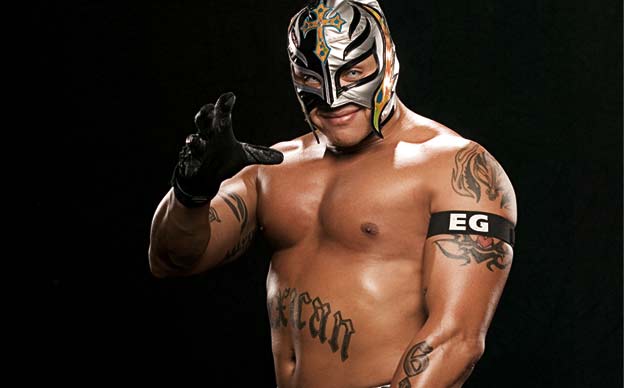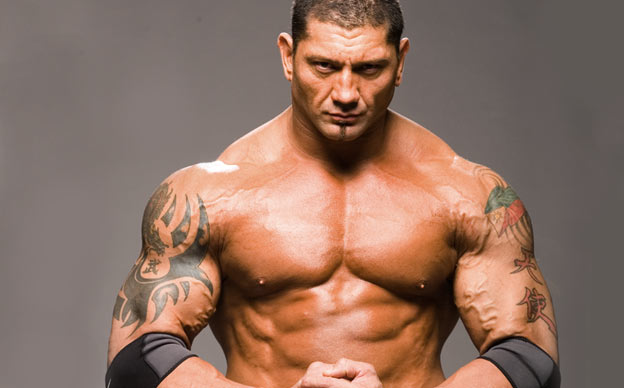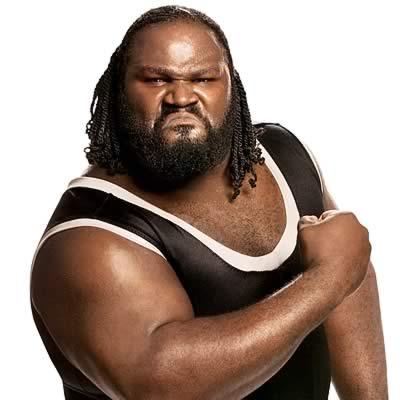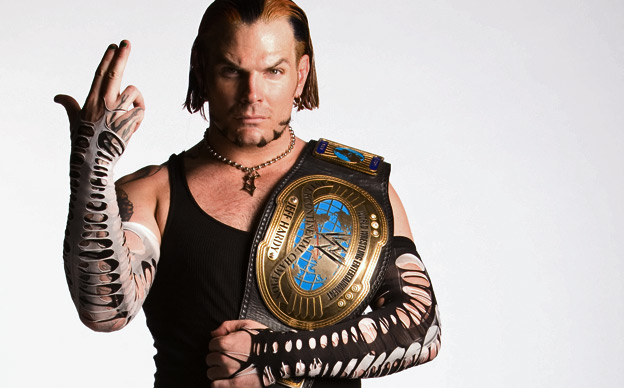Subscribe to:
Post Comments (Atom)
skip to main |
skip to sidebar











Randy orton
Height:
6 foot 4
6 foot 4
Weight:
245 pounds
245 pounds
From:
St. Louis
St. Louis
Signature Move:
RKO
RKO
WWE Debut:
April 2002
April 2002
Career Highlights:
WWE Champion; World Heavyweight Champion; Intercontinental Champion; World Tag Team Champion
WWE Champion; World Heavyweight Champion; Intercontinental Champion; World Tag Team Champion
Randy Orton doesn’t have many interests. Other than listening to Metallica or Pantera and watching the occasional movie, wrestling is his life…or, as he would tell you, his destiny.
It’s easy to understand why. His father is WWE Hall of Famer “Cowboy” Bob Orton, his uncle Barry “Barry O” Orton, and his grandfather “The Big O,” the late Bob Orton, Sr. Most kids remember their first ball game or school play; Randy’s childhood memories include sitting in the kitchen of his family’s St. Louis home with “Rowdy” Roddy Piper and Greg “The Hammer” Valentine, and repairing a broken banister leaned on by Andre the Giant. He wasn’t even five years old when he watched his father knock out “Mr. Wonderful” Paul Orndorff in the main event at the inaugural WrestleMania, but he already knew he wanted to be a WWE Superstar.
Randy’s parents tried dissuading him; his father even warned that life in the ring meant a life on the road, away from family. Yet Randy, seeing how his friends perceived his world-traveling dad in “a different light,” recalls only thinking the prospect was “quite appealing, and something I wanted to do.”
Rey's fact's

rey mysterio's facts
Height:
5 foot 6
5 foot 6
Weight:
165 pounds
165 pounds
From:
San Diego
San Diego
Signature Move:
619
Exploding onto the sports-entertainment scene in the mid 1990s, the colorfully masked rey mysterio quickly redefined the way the game was played in the ring. From his awe-inspiring West Coast Pop to his trademark 619, Mysterio is on the cutting edge of wrestling excellence. The definitive high-flying Superstar, Mysterio, despite his size, is an innovative underdog that fans of all ages have grown to respect and love.
619
Exploding onto the sports-entertainment scene in the mid 1990s, the colorfully masked rey mysterio quickly redefined the way the game was played in the ring. From his awe-inspiring West Coast Pop to his trademark 619, Mysterio is on the cutting edge of wrestling excellence. The definitive high-flying Superstar, Mysterio, despite his size, is an innovative underdog that fans of all ages have grown to respect and love.
Rey's impressive Championship resume ranks up there with the all-time greats. His World Championship reign complimented eight Cruiserweight Championships, four WWE Tag Team Championships and one Royal Rumble win.
Batista's Facts

batista's fact's
Height:
6 foot 6
6 foot 6
Weight:
290 pounds
290 pounds
From:
Washington, D.C.
Washington, D.C.
Signature Move:
Batista Bomb
career highlight's:world heavyweight champion WWE tag team champion
2005 royal rumble winner
Batista Bomb
career highlight's:world heavyweight champion WWE tag team champion
2005 royal rumble winner
Dave Batista has been “The Animal” since childhood, in temper if not in name. Raised in a rough part of southeast Washington, D.C., he describes himself as being “a skinny kid with asthma and a bad size complex”— and a penchant for getting into trouble with authorities. He spent a few years in San Francisco after his parents separated, until his mother sent the troubled teen to live with his father in suburban Virginia. By the time he turned 17, he was estranged from both parents, living on his own, and still getting into trouble.
For the better part of 10 years, Batista spent his days training and competing as a bodybuilder, and his nights “bouncing in clubs, floating from here to there.” (He’s still amazed that one club he worked at is less than two blocks from Washington D.C.’s MCI Center, where he defended his world heavyweight champion against JBL at SumerSlam in 2005.) His drifting stopped the night he unleashed his explosive temper on two patrons who had attacked his fellow bouncers. “By the time I was finished with them,” he relates, “they were lying on the ground with their eyes rolling in the back of their heads. I was very scared they were going to die.” They didn’t, but the incident did result in Batista’s arrest, a year’s probation, and his decision to make radical changes in his life.
The Great Khali's fact's

The Great Khali fact's
Height:
7 foot 3
7 foot 3
Weight:
420 pounds
420 pounds
Career Highlights:
World Heavyweight Champion
World Heavyweight Champion
Hailing from India, The Great Khali stands at an impressive 7 foot 3 inches and weighs 420 pounds. This enormous monster has walked the jungles of India unafraid of pythons and wrestled White Bengal tigers. Legend states that the Punjabi Warrior has "stared into the abyss and the earth trembled at his gaze."
The Great Khali was responsible for bringing the most barbaric match in WWE history to The Great American bash: the Punjabi Prison Match. One of the largest athletes the WWE has ever bared witness to, The Great Khali stands to be a powerful force and a threat to every member of the locker room.
John Cena Fact's

John Cena Fact's
height:
6 foot 1
6 foot 1
Weight:
240 pounds
240 pounds
From:
West Newbury, Mass
West Newbury, Mass
Signature Move:
The FU; STFU
The FU; STFU
Career Highlights:
WWE Champion; U.S. Champion; World Tag Team Champion
WWE Champion; U.S. Champion; World Tag Team Champion
Let’s be honest: hailing from the rolling hills and broad valleys that constitute West Newbury, Mass., will likely never earn you “street cred”--unless, of course, you’re John Cena. Then again, it didn’t happen overnight for him, either. Long before he became the Dr. of Thuganomics, young Cena had to endure the neighborhood rocker kids’ taunts about his baggy pants and rayon Kwamé shirts. His love for freestyling lyrics about rebellion and individualism just didn’t fit within the small rural community. By the time he turned 15, however, those same kids would stop teasing him, for it became apparent that Cena had been developing another passion: hitting the gym.
After applying to more than 60 colleges (and being accepted by 58), Cena attended Massachusetts’ Springfield College, where he excelled as a Division III All-American offensive lineman and team captain for the Pride. But as much as he fondly remembers his college football accomplishments, he’s equally as proud of earning his degree in Exercise Physiology, which he attributes to making him a smarter, more durable performer in the ring today.
Though a huge WWE fan since childhood, rooting for heroes like Hulk Hogan Ultimate Warrior, and Shawn Micheals, Cena had honestly never even considered a career in sports-entertainment. Instead, he flew out to California in 2000, to pursue a profession in bodybuilding (a move he now admits to making simply because his father had told him he wouldn’t make it out there). But while working behind the counter of Gold’s Gym in Venice, a discussion with a wrestler-in-training encouraged Cena to enroll in classes at Ultimate Pro Wrestling. He was instantly hooked, and became motivated to learn everything he could about his newfound craft. He obviously proved a quick study; within a year, World Wrestling Entertainment signed Cena to a developmental contract to train at Ohio Valley Wrestling. By June 2002, he had joined the Smackdown roster, and less than a year later headlined the first of what has since become countless main-event matches.
Undertaker's facts

The Undertaker's fact's
Height:
6 foot 10 1/2
6 foot 10 1/2
Weight:
305 pounds
305 pounds
From:
Death Valley
Death Valley
Signature Move:
Chokeslam; Tombstone; Last Ride
Chokeslam; Tombstone; Last Ride
WWE Debut:
Nov. 22, 1990
Nov. 22, 1990
Career Highlights:
WWE Champion, World Heavyweight Champion, World Tag Team Champion, WCW Tag Team Champion, Hardcore Champion, undefeated at WrestleMania (15-0)
WWE Champion, World Heavyweight Champion, World Tag Team Champion, WCW Tag Team Champion, Hardcore Champion, undefeated at WrestleMania (15-0)
From the moment his signature gong fills the air, The undertaker captivates WWE fans by his mere presence. The Deadman from Death Valley is usually a man of few words, but he can intimidate even the toughest WWE Superstars with just one glance. His somber persona has been a terrifying trademark of WWE for over 15 years and no list of WWE all-time greats can be considered complete without Undertaker.
First seen at the 1990 Survivor Series, Undertaker was introduced as the final member of Ted DiBiase’s “Million Dollar Team.” Since then he has come to be a multiple time WWE and World Heavyweight Champion, and maintained a wrestlemania undefeated streak that currently stands at an impressive 15-0 after defeating batista at WrestleMania 23. The Deadman has defeated such Superstars as randy orton, Triple H “Sycho” Sid, “Stone cold” Steve Austin, Bret “Hitman” Hart and Jake “The Snake” Roberts to earn his many titles and keep his WrestleMania streak intact. In October 2007, The Deadman also became the first man to break free from The Great Khali’s Vise Grip to defeat the 7-foot-3, 420-pound colossus as well.
Throughout his time in WWE, Undertaker has notoriously disappeared for months at a time; often thought dead and “resting in peace,” The Phenom always mysteriously returns to the ring to seek vengeance against those who have sent him away. From Yokozuna to Kane to Edge, Undertaker always finds a way to claim the souls of those who have wronged him.
In addition to his solo success, Undertaker has been quite the team player throughout his career. From his lengthy relationship with manager Paul Bearer to spearheading the Ministry of Darkness (which included the recruitment of Superstars such as the Acolytes, The Brood, Mideon & Viscera), The Phenom has been successful in every venture. He has even earned multiple World Tag Team Championships, standing alongside the likes of The Rock, Stone Cold, Big Show and his own brother, Kane.
Kane's Fact's

Kane's fact's
Height:
7 foot
7 foot
Weight:
326 pounds
signature move:
chokeslam
career highlight's:
wwe champion
international champion
world tag team champ
wcw tag team champion
hardcore champion
326 pounds
signature move:
chokeslam
career highlight's:
wwe champion
international champion
world tag team champ
wcw tag team champion
hardcore champion
At 7-feet tall and more than 300 pounds, the Big Red Monster has been tormenting opponents since his debut, and even that was huge.
Following months of speculation, Kane made his first appearance on Oct. 5, 1997, at Bad Blood. There, he ripped the cage door off during the first-ever Hell in a Cell Match between Shawn Michaels and Undertaker. Kane and Undertaker then stood toe to toe during a chilling stare-down. The Big Red Monster wore a mask, and he hid his body in attire designed to conceal hideous burns from a fire supposedly started by his half-brother Undertaker. Then, Kane kicked the Deadman in the stomach and Tombstoned him — allowing a bloody Michaels to pin Undertaker for the victory.
Despite the unprovoked attack, Undertaker vowed he would not wage war against his own flesh and blood in front of a national audience. But Kane’s assaults continued, and when he set Undertaker ablaze inside a casket at the 1998 Royal Rumble, the Phenom was left with no choice. At WrestleMania XIV, the half-brothers met for the first time in singles competition, but it was only the beginning.
Mark Henry's Fact's

Mark Henry's Fact's
height:
6-foot-1
Weight:
380 pounds
from: silsbee,Texas
signature move:
world's strongest slam
6-foot-1
Weight:
380 pounds
from: silsbee,Texas
signature move:
world's strongest slam
Breaking records, pumping iron and devastating opponents with his unmatched strength, it's no wonder they call Mark henry the World’s Strongest Man.
Mark Henry’s rise to fame began in 1992 at the Olympics in Barcelona, where he competed in weightlifting in the super-heavyweight division.
Three years later at the Pan American Games, Henry captured a gold, silver and bronze medal, solidifying his place as one of the strongest men ever to walk the planet. He has also engaged in Strongman competitions, including the 2002 “World’s Strongest Man” competition at the Arnold Schwarzenegger Classic, where Henry earned first prize.
Henry began his WWE career in 1996. He worked on his own, but in 1997 he was soon lured into the faction known as the Nation of Domination, which also featured The Rock. The group broke up in late ’98, and Henry went back to singles competition. After holding the WWE Europeon championship in 1999, Henry took time off in 2001 to train for another Strongman competition. Henry returned to the ring in 2002, and was drafted to the Smackdown roster and later briefly appeared on Raw after a big trade.
Finlay's Fact's

Finlay's facts
Height:
6 foot 2
6 foot 2
Weight:
235 pounds
235 pounds
From:
Belfast, Ireland
Belfast, Ireland
Signature Move:
The Celtic Cross
The Celtic Cross
Career Highlights:
United States Champion; WCW Television Champion; WCW Hardcore Champion
United States Champion; WCW Television Champion; WCW Hardcore Champion
Associates:
Hornswoggle
Hornswoggle
WWE Debut:
Jan. 20, 2006
Jan. 20, 2006
Finlay has made his mission clear: he’s here to fight. That’s exactly what he’s going to do, and he’s always been good at it. Hailing from the mean streets of Belfast, Ireland, Finlay will tell you that he loves to fight, and this double-tough individual can back up his bravado.
Throughout his career, Finlay has been regarded as one of the toughest men to ever step foot inside the ring. Originally plying his trade in Europe, Finlay held 16 major championships in Great Britain and Germany before coming to the United States in the mid-1990s.
Landing in WCW, Finlay immediately began an intense rivalry with fellow European William regal. Finlay went on to win the WCW Television Championship from Booker T in 1998, but made his true mark in WCW’s Hardcore division. However, shortly after winning the first ever Hardcore Junkyard Invitational in 1999, Finlay suffered a severe leg injury at a WCW live event when he was sent crashing through a table. After a short stay in WCW following his return, Finlay returned to his native Great Britain to wrestle in 2001.
Mr Kennedy's facts

Mr.kennedy's fact's
height:
6-foot-2
weight:
243 pounds
From:
green bay, wisc
signature move:
The Kenton bomb
Without doubt, Mr.kennedy has been one of the most successful newcomers to WWE in recent years.after beating six former world champions in his first two years of smackdown,Kennedy main event superstar and a contender for every title he has chased.
6-foot-2
weight:
243 pounds
From:
green bay, wisc
signature move:
The Kenton bomb
Without doubt, Mr.kennedy has been one of the most successful newcomers to WWE in recent years.after beating six former world champions in his first two years of smackdown,Kennedy main event superstar and a contender for every title he has chased.
matt hardy facts

matt hardy's fact's
height
6-foot-2
weight:
225 pounds
from
Cameron .n.c.
signature move
twist of fate
Career Highlights: World Tag Team Champion; European Champion; Hardcore Champion; Cruiser weight Champion; WCW Tag Team Champion
Time and time again he has sacrificed his body for both the enjoyment of the fans, and the sport which he has loved so dearly for his entire life.
Matt came to the WWE in 1998 as a tag team specialist, teaming up with his brother Jeff to form the appropriately named The Hardy's.The Hardy's went on to become five-time World Tag Team Champions in WWE before breaking up in 2002.In 2003, shortly after joining the smackdown roster, Matt Hardy pursued the cruiserweight champion. After struggling for weeks to make the weight limit, Hardy defeated Kidman for the Championship at No Way Out '03.
6-foot-2
weight:
225 pounds
from
Cameron .n.c.
signature move
twist of fate
Career Highlights: World Tag Team Champion; European Champion; Hardcore Champion; Cruiser weight Champion; WCW Tag Team Champion
Time and time again he has sacrificed his body for both the enjoyment of the fans, and the sport which he has loved so dearly for his entire life.
Matt came to the WWE in 1998 as a tag team specialist, teaming up with his brother Jeff to form the appropriately named The Hardy's.The Hardy's went on to become five-time World Tag Team Champions in WWE before breaking up in 2002.In 2003, shortly after joining the smackdown roster, Matt Hardy pursued the cruiserweight champion. After struggling for weeks to make the weight limit, Hardy defeated Kidman for the Championship at No Way Out '03.
jeff's facts

jeff hardy's fact's
height
6-foot-1
weight
225 pounds
from cameron n.c.
signature move
swanton bomb
wind twist of fate
Trained By: Dory Funk, Jr., Michael Hayes
Career Highlights: World Tag Team Champion; Intercontinental Champion; Hardcore Champion; European Champion; Light Heavyweight Champion; WCW Tag Team Champion
. For Jeff, the wear-and-tear of living life on the road would help prompt him to leave WWE in 2003. But after a three-year personal journey of refocusing his passion and energies, he now finds himself “in a positive placeReturning to WWE in August 2006, this reinspired risk-taker is back to creating the art he loves most—entertaining WWE fans in arenas around the world. And his most extreme masterpiece awaits.
6-foot-1
weight
225 pounds
from cameron n.c.
signature move
swanton bomb
wind twist of fate
Trained By: Dory Funk, Jr., Michael Hayes
Career Highlights: World Tag Team Champion; Intercontinental Champion; Hardcore Champion; European Champion; Light Heavyweight Champion; WCW Tag Team Champion
. For Jeff, the wear-and-tear of living life on the road would help prompt him to leave WWE in 2003. But after a three-year personal journey of refocusing his passion and energies, he now finds himself “in a positive placeReturning to WWE in August 2006, this reinspired risk-taker is back to creating the art he loves most—entertaining WWE fans in arenas around the world. And his most extreme masterpiece awaits.
No comments:
Post a Comment